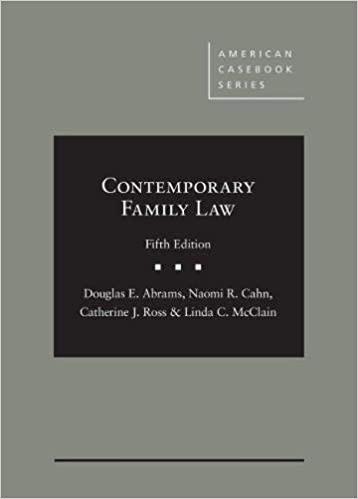Answered step by step
Verified Expert Solution
Question
1 Approved Answer
Eleanor Schock discovered that her late father's attorney, Pat Nero, had embezzled from the estate of her father, Miller, including the sum of $23,331.72 in
Eleanor Schock discovered that her late father's attorney, Pat Nero, had embezzled from the estate of her father, Miller, including the sum of $23,331.72 in Miller's savings account at Old Stone Bank. At the time Nero withdrew the funds, Old Stone was being run under the conservatorship of the Reso- lution Trust Corporation (RT), the FDIC's statu- tory predecessor. As holder of her father's estate's claims, Schock sued the FDIC, as receiver for Old Stone, for breach of contract, alleging that the bank permitted an unauthorized signatory (Nero) to withdraw funds on deposit in the Miller sav- ings account. The FDIC receiver argued that the bank had paid Nero, a fiduciary who was autho- rized to receive the money in the account, in good faith and should not be held liable because Nero misappropriated the money. Schock argued that Nero's apparent authority to withdraw the money as Miller's agent ended by operation of law when Miller died. In response, the FDIC receiver argued that apparent agency terminates only when a third party has notice of the termination. Schock offered evidence that the bank had actual notice that Miller had died when it permitted the Nero savings account withdrawal. Schock's evi- dence included a bank employee's statement that the bank had in place a procedure for checking the obituaries in the local paper to see whether bank clients had died, as well as the fact that an obitu- ary for Miller appeared in that paper. Was Schock successful at trial? Did the publication of an obit- wary constitute actual notice? [Shock v. United States, 254 F3d 1 (2001).1 Identify the parties involved in the case dispute (who is the plaintiff and who is the defendant).? Identify the facts associated with the case and fact patterns.? Develop the appropriate legal issue(s) in question (i.e., the specific legal issue between the two parties). Provide a judgment on who should win the case - be clear.? Support your decision with an appropriate rule of law.? Be prepared to defend your decision and to objectively evaluate the other points of view
Step by Step Solution
There are 3 Steps involved in it
Step: 1

Get Instant Access to Expert-Tailored Solutions
See step-by-step solutions with expert insights and AI powered tools for academic success
Step: 2

Step: 3

Ace Your Homework with AI
Get the answers you need in no time with our AI-driven, step-by-step assistance
Get Started


